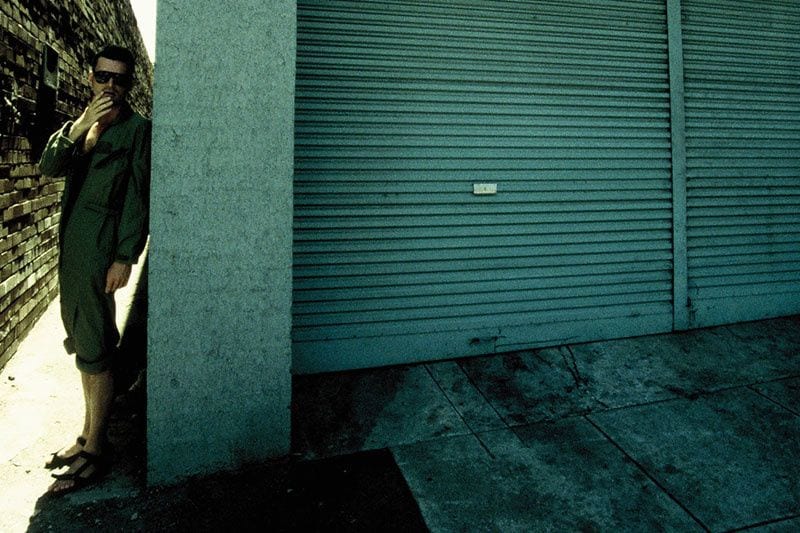
For almost 40 years with releases on labels such as Marionette, Latency, and Dekmantal and on his much-lauded work with legendary Can drummer Jaki Liebezeit, German musical pioneer Burnt Friedman has been making music that pushes at the very boundaries of genre. Although broadly speaking an electronic artist, he has consistently worked against any lazy categorization of his work by incorporating sounds and rhythms more commonly associated with dub, jazz, and techno and encoding them into his musical DNA.
For Friedman, music should be primarily about freedom. The freedom to experiment, to eschew genre, and to move far beyond traditional time signatures. Equally important are the tools that he exploits in his music. It just so happens that the majority of his music is made using instruments that are common to electronic music but for him the results should not be confined or constricted by them. It is a fascinating approach to music that has led to some of the most oblique, cryptic and enigmatic music made by anyone over the last four decades. A body of work that is more than worthy of an anthology for fans and newcomers alike.
These 17 tracks document his journey as technology gradually caught up with his thought processes. From the earliest samplers and synths to the more modern processes that are familiar today, they show an artist who has always been at the forefront of technological change as he sought to discover how he could manipulate technology for his own ends during the ’80s, ’90s and ’00s. Nevertheless, the common thread through the compilation is his distinctive signature style – A metronomic pursuit of idiosyncratic grooves.
That style is evident on opening track “En Bu 2”. A swinging, metronomic pulse acts as the guide with flashes of sound that burst like flares across the night sky and jazzy cymbal splashes acting as the perfect counterpoint. It’s these carefully calibrated and precise beats that distinguish Friedman’s approach to music as something truly unique. “Monkhide” stretches and sustains saxophone notes that hang tantalisingly in the air encircled by a deceptively simple three note riff. The more languid dub of “The Pestle” sees Friedman weave in Takeshi Nishimoto’s sarod into the mix to add texture. Again, the boundless, emblematic spirals of percussion that navigate through the mix are what makes Friedman’s sound so distinctive and strikingly inventive.
“Sorcier”, from the mid-’90s, shows a more ambient, contemplative side to his oeuvre. The shimmering opening, like the gentle ring of wind chimes and bells, drops away to leave something more nocturnal as if replicating the shift from day to night. It suggests Friedman has a deep affection for the sounds of nature. This is immediately contrasted with the twitchy, urgent groove of “Nerfs D’Acier”. A reminder of how Friedman was originally inspired enough to push the original sounds, instinct and emotion of early techno further by employing cymbal splashes and more sinuous, glitchy loops and samples. It still sounds as forward thinking as it did then.
Experimenting with percussion and drum sounds has been a feature of Friedman’s work throughout his career. The lithe beats of “Intrication” incorporate rhythms only really previously heard in what can loosely be described as “world music”. On “Near Life” he couples squelchy synth notes with see-saw staccato beats and steel drums, while “Languish” has a more tribal feel. Again, Friedman explores the freedom offered by jazz as he toys with time signatures whilst maintaining a real swing to the groove. The fairground wurlitzer chords only add to the slightly outre feel which are again present on “Grace”. “Grace” is even more experimental as the echoing post-rock guitar of Joseph Suchy is used beautifully to build and then maintain tension.
The older tracks on the anthology provide a fascinating history of how Friedman’s sound has developed over the years. “Knick” from 1994, floors with its carefully layered, knotty rhythms while “Day in Rho” rides an ambient, euphoric wave featuring almost imperceptible sonic manipulations. Many of the sounds and precise layering of beats, pioneered by Friedman on these 90s tracks are present in much of the electronic music around today. Although, it does not seem as radical now, he was essentially laying the blueprint for the hybridization of genre in modern electronic music.
Burnt Friedman has always enjoyed toying with preconceptions and flouting conventions, something that is evident throughout this anthology. Whether it be in his exploitation of genre, of time signatures or of technology, his work should be lauded as embodying the progressive spirit that should be present in all forms of music. He is an artist who has persistently confused, delighted and challenged in equal measures and this anthology serves as the perfect entry point into his work.

